- Atlanta, GA

Menu

Overview: Term life Insurance is often the most economical choice for managing temporary financial commitments. Should you have specific obligations, like a mortgage or your child’s college tuition, term life insurance can serve as a vital financial safeguard.
Recommendation: We suggest evaluating a term policy that includes an option to convert to a whole-life policy. By establishing the plan to convert either at the conclusion of the term or while it is still active, you can maintain coverage that lasts beyond a particular life stage without necessitating additional underwriting.
Term Life Insurance: This type of insurance provides coverage for a specific period, offering a death benefit to your beneficiaries if you pass away during the policy term. It is suitable for individuals who need coverage for a specific time, such as until their mortgage is paid off or their children finish college. These term policies can be turned into a permanent product. When looking at term life always consider universal life as term life on steroids.

During the level term period, which spans from 5 to 40 years, the annual costs are stable. Once this period concludes, you have the opportunity to renew the policy, but be aware that the rates will rise considerably with each renewal.
A traditional term life insurance policy’s annual costs remain the same every year for the level term period, such as 10 or 20 years. Once the level term period is over, you can generally renew the policy, but at higher rates each year you renew.
The policyholder has the opportunity to convert the existing policy into a permanent life insurance policy without the need for a medical exam or proof of insurability. This option is limited to certain insurance carriers.
Convertible term life insurance is a type of term life insurance policy that allows the policyholder to convert the policy into a permanent life insurance policy without undergoing a medical examination or providing evidence of insurability.


The death benefit and premium are designed to decrease as time passes. This form of insurance is typically used to manage diminishing financial obligations, such as those related to mortgage protection, loans, or small business debts.
Decreasing term life insurance is a type of life insurance where the death benefit decreases over time. This type of policy is often used to cover specific financial obligations that decrease over time, such as a mortgage or other long-term debt. As the outstanding balance of the debt decreases, the amount of coverage provided by the policy also decreases.
Ensures a regular, tax-exempt income for beneficiaries instead of a lump sum payment in the case of your demise during the policy period. Supports your family in managing their finances by replacing any lost income.
Family income benefit is a type of term life insurance that provides a regular, tax-free income to your beneficiaries rather than a lump sum payment in the event of your death during the term of the policy. This can help your family manage their finances by providing them with a steady stream of income to replace your lost earnings.


Ensuring that coverage remains in line with inflation and the changing landscape of financial needs is crucial. As the death benefit expands over time, it is common for premiums to rise correspondingly.
Increasing term life insurance can be a good option for individuals who want to ensure that their life insurance coverage keeps pace with inflation and their changing financial needs. However, it's important to note that premiums for increasing term life insurance are typically higher than for traditional level term life insurance, since the death benefit increases over time.
A Term Life Insurance’s policy annual costs remain the same every year for the level term period, such as 10 or 20 years. Once the level term period is over, you can generally renew the policy, but at higher rates each year for renewal.
The policy expires if you outlive the length of the policy without renewing. You receive none of the premiums paid into the policy unless you bought a return of premium term life insurance policy.
Many people buy Term Life Insurance for income replacement. They’re looking for life insurance that will provide funds for a family to pay expenses for a certain number of years if they are no longer there to work and earn money.
Term life is good for:
The policyholder chooses both the length of the term and the coverage amount, such as $500,000.
If the insured person dies while coverage is in force, the beneficiaries receive the policy’s death benefit. If the insured person lives longer than the policy’s term and doesn’t renew it, the coverage ends.
You may be able to convert the term life policy to a permanent life policy, such as whole life or universal life insurance. This is a useful tactic if you realize you want longer life insurance coverage and don’t want to shop for a new policy.
The policyholder chooses both the length of the term and the coverage amount, such as $500,000.
If the insured person dies while coverage is in force, the beneficiaries receive the policy’s death benefit. If the insured person lives longer than the policy’s term and doesn’t renew it, the coverage ends.
You may be able to convert the term life policy to a permanent life policy, such as whole life or universal life insurance. This is a useful tactic if you realize you want longer life insurance coverage and don’t want to shop for a new policy,
The most common type of term insurance is level term. This is typically what people are referring to when they talk about term insurance. Your level term policy will only last for a specific period, such as 5, 15, or 30 years. Your monthly premium and death benefit remain fixed for the length of the policy. Level-term policies are known for being affordable.
We offer a no-exam term policy up to $2 million and an underwritten term policy which will cost less if you are healthy and goes beyond 10 million.
Fully underwritten terms are from 5 to 40 years and can have a potential death benefit of over $65 million
With our nationwide abundance of insurance carriers, we can guarantee the lowest possible premium.
These are fixed premiums and include riders for long-term care and critical illness.
Our agents are your advocates, we are an independent insurance broker who has no pressure to place business with a particular carrier. We want what’s right for your family. Your agent will answer questions and ask for more details on medications and health conditions. Their main job is to present you with the best possible scenario to the carrier underwriters.

Simple to fully underwritten policies with all the extras that we can show you